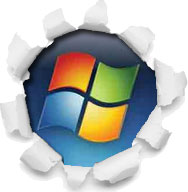
Bilbrey Microsoft Access Case Study
Microsoft Access Programming Case Study
Business Situation:
WSI was originally hired to convert a completely paper,
manual system into an automated paperless based system that
Bilbrey Insurance Services, Inc. (BISI) would use to run the
day-to-day operations of their company.
Major Goals:
- Develop a system that would allow BISI personnel to
perform their jobs efficiently.
- Automate as many processes as possible to eliminate and
reduce the number of repetitive tasks that personnel
performed.
- Push as many data entry tasks as possible back to BISI's
clients allowing BISI personnel to focus on business tasks.
- Develop a system that would reduce the number of personnel
necessary to run the business operations.
Solution:
WSI set out to create an environment that would allow BISI to
accomplish the goals that they wished to achieve. As the
exclusive architects for this transformation, WSI had the major
say in the solution that was created throughout the entire
process.
It was determined early on that the majority of BISI's goals
would be best accomplished by a phased approach. This was
determined to be the best route due to the large expense that
the entire project would cost. By using a phased approach, this
would allow that cost to be spread out over a period of time. In
addition, the phased approach was determined to be the best
approach so that the system could be built, tested and actually
see results quickly rather than having to wait until the entire
system was built. This also allowed for freedom and flexibility
in the design process that allowed for changes to be made as any
unforeseen problems were encountered.
BISI first identified those business tasks that they felt
would give them the most return from being put into a system. As
part of this process, WSI sat down with BISI and helped them
weed out those tasks that were too aggressive or didn't seem to
present a good return to be included in the first phase. WSI
then developed an application for these business tasks.
After completion of the first phase, a series of additional
phases were begun and completed, that either enhanced or added a
whole new business process to the BISI application. After
completion of these first few phases, BISI staff began to see
some real efficiencies and automation that allowed them to grow
their business significantly without having to take on any
additional staff.
The next goal to be attacked was that of pushing as much data
entry responsibility back to BISI's clients, thus allowing BISI
personnel to focus on business tasks and not data entry. It was
determined that this goal could be best accomplished by building
a web based application. This would allow BISI's clients to
perform data entry tasks that they normally did on paper forms
and mailed into BISI. These data entry tasks would then go
directly into BISI's production database where instead of having
to re-key paper forms, BISI personnel would inspect the data
that was being submitted and approve or reject the entry. This
allowed BISI to save a significant amount of time on a task that
was vital to business.
The next goal that BISI had was to make life with their
vendors as efficient as possible. To this extent, BISI has begun
developing an extranet system to enhance data sharing and
business processing with it vendors. This includes sharing of
data, reports and business decisions.
At this time, BISI continues to examine their current
business processes for any additional tasks that need to be put
into the application.
Benefits:
BISI is in the process of automating all processes resulting
in the ability to grow their business without taking on
additional staff and even not having to replace staff who leave
the company. Relationships with clients and vendors have been
enhanced due to the increased functionality that they both
encompass.
Technical Information:
Business Application - This application was originally
developed in Microsoft Access 2.0 using DAO as the data access
method. The application has since been converted to an Access 97
format.
Database - When the application was originally built, an
Access database was used to store all data. As the database
continued to grow all data was transferred into a SQL Server 7.0
database that has since been migrated to a SQL Server 2000
database.
Internet/Extranet Systems - Running on an IIS Server, all
pages were developed using Microsoft Visual InterDev.